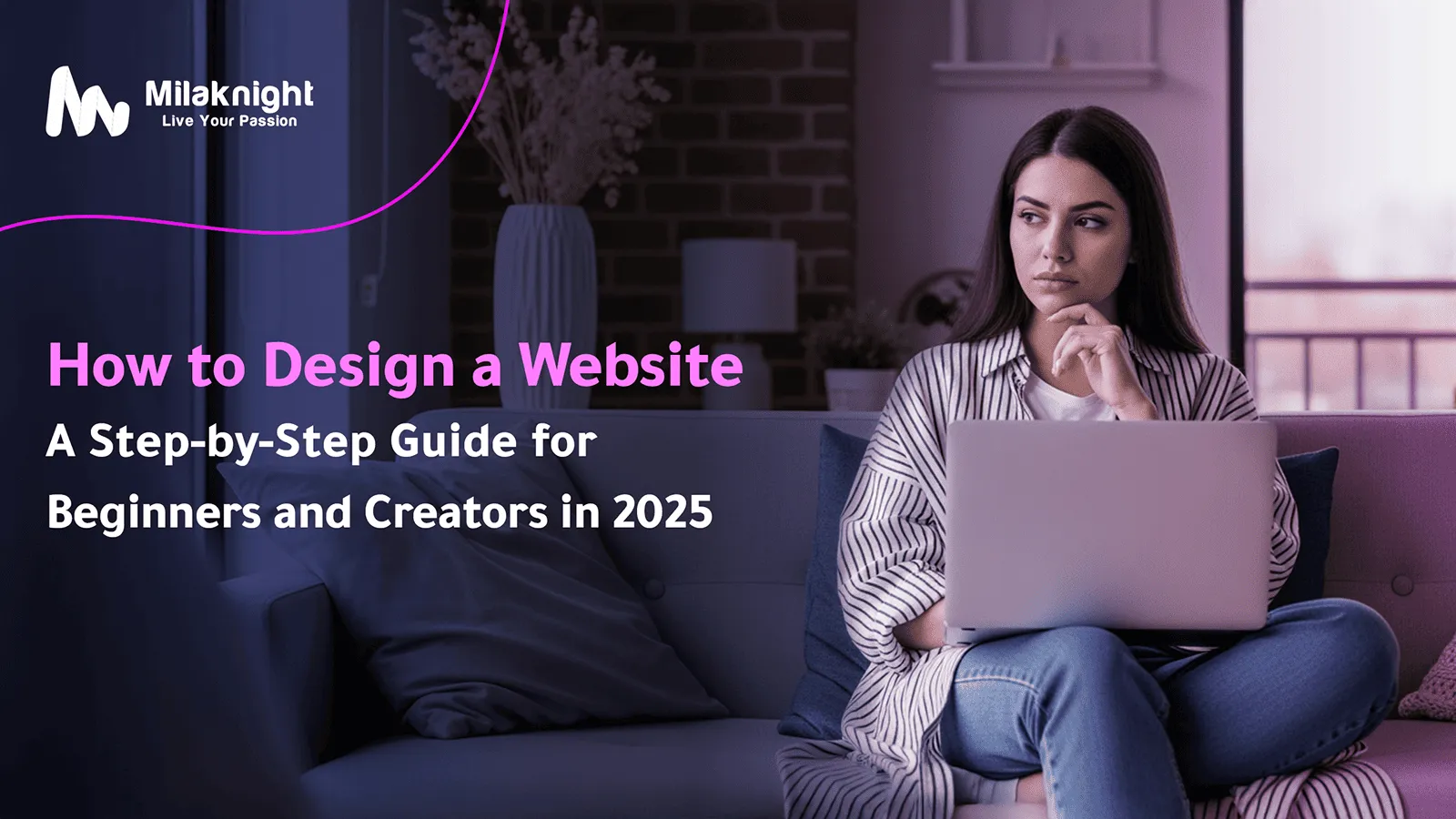How to Make Your Website Rank Higher on Google: Proven Strategies for 2025
In a world driven by digital presence, knowing how to design a website is no longer a technical luxury—it’s a powerful skill that can open doors to opportunities, branding, sales, and influence. Whether you’re launching a personal brand, a business, or a blog, this guide will show you how to create your website, structure it for results, and make it stand out in a crowded online world.
Why Designing a Website Matters
First impressions matter. When someone visits your site, they’re judging your brand’s credibility, professionalism, and purpose in just a few seconds. A clean, responsive, and well-designed website builds trust and converts visitors into loyal users or customers.
This article will cover how to build your personal website, how to organize pages, and how to choose tools like WordPress to design a professional, scalable site.
Step 1: Define Your Website’s Purpose and Goals
Before asking how to create my website, ask yourself: Why am I building this website? Your answer will define the design, structure, and content.
Common Website Goals:
- Personal branding or portfolio
- Blog or content hub
- Online store
- Company profile
- Event or campaign landing page
Clearly defining the goal will shape every design decision going forward—from choosing a layout to deciding on the features you need.
Step 2: Choose the Right Platform
If you're just starting out and wondering how to create a website without coding, your best option is to use a content management system (CMS) like WordPress.
Why WordPress?
- No coding needed
- Thousands of design templates
- Plugins for SEO, security, payments, etc.
- Large community and support
For those specifically asking how to create website using WordPress, the process is straightforward: pick a hosting provider, install WordPress with one click, select a theme, and start customizing.
Step 3: Choose a Domain Name and Hosting
A domain is your website’s address (like www.mysite.com), while hosting is the server where your website files live.
Tips for Choosing a Domain:
- Keep it short and memorable
- Avoid hyphens or confusing spellings
- Use .com if possible for credibility
Most hosting providers like Bluehost, SiteGround, or Hostinger offer domain registration and easy WordPress integration—perfect for those figuring out how to build your personal website from scratch.
Step 4: Plan Your Website Structure
Now that you’re ready to design, it’s time to map out your site structure. Ask yourself:
- What pages do I need?
- How will users navigate?
Typical Pages:
- Home
- About
- Services or Portfolio
- Blog
- Contact
Create a sitemap or simple sketch before designing. A clear, intuitive structure improves user experience and SEO.
Step 5: Choose a Theme and Design Style
This is where the fun begins.
How to Design a Website That Looks Professional:
- Choose a clean, mobile-responsive theme
- Use a consistent color palette and fonts
- Prioritize readability and visual hierarchy
- Keep navigation simple and intuitive
- Use quality images and icons
If you're creating your site with WordPress, you can explore themes from:
- Astra (fast and flexible)
- OceanWP
- Divi (drag-and-drop builder)
- Elementor-compatible themes
These are ideal if you're exploring how to create website using WordPress with minimal effort.
Step 6: Add Content That Converts
Design means more than how it looks—it’s also about what your website says.
Content Checklist:
- Clear, compelling headlines
- Short paragraphs with value
- CTA buttons (Contact Us, Learn More, Buy Now)
- Testimonials or reviews
- FAQ sections
If you’re building a portfolio, make sure your homepage reflects your voice, work, and impact clearly. If you’re building a blog, ensure each post follows a clear structure with SEO elements.
Step 7: Optimize for SEO
Even the most beautifully designed website won’t matter if no one finds it.
SEO Best Practices:
- Use relevant keywords (like how to design a website) in titles and headings
- Add meta titles and descriptions for each page
- Compress images for speed
- Use internal links to connect related content
- Set up Google Analytics and Search Console
This is especially important for those asking how to create website that ranks on Google. Design and SEO go hand in hand.


Step 8: Make It Mobile-Friendly
Over 60% of website visits come from smartphones. Your site must look and function flawlessly on smaller screens.
Mobile Design Tips:
- Use responsive themes
- Keep text large and buttons tappable
- Avoid pop-ups that cover the content
- Test on multiple devices
If you're using WordPress, many themes like Astra or Hello Elementor offer built-in mobile optimization.
Step 9: Test Before You Launch
Before going live, make sure your site is:
- Loading fast
- Error-free (no broken links)
- Easy to navigate
- Displaying correctly on all devices
- Secure (SSL certificate installed)
Once you’re confident, hit that publish button. Congratulations—you’ve just learned how to design a website and made it live.
Step 10: Keep Improving
Web design isn’t a one-time task. Monitor user behavior, collect feedback, and update your design over time.
Tools to Help You Grow:
- Hotjar or Microsoft Clarity for heatmaps
- Yoast SEO for search optimization
- Elementor or Beaver Builder for design tweaks
- Google Analytics for performance insights
Continue learning, experimenting, and refining—because your website is the face of your brand online.
FAQs: How to Make Your Website Rank Higher on Google
Start with WordPress or Wix. Both offer beginner-friendly drag-and-drop builders and tons of pre-made templates.
Design focuses on the user experience and visuals, while development involves coding and backend functionality.
With tools like WordPress, you can build a basic site in a day. For more complex websites, expect 1–3 weeks.
Yes—especially if you’re wondering how to create website using WordPress, it's affordable, customizable, and requires zero coding knowledge.
Final Thoughts
Learning how to design a website may feel overwhelming at first, but with the right guidance and tools, it becomes an empowering process. Whether you're aiming to build your personal website, launch a brand, or share your ideas with the world, this guide equips you with everything you need. If you want to save time and ensure your website is professional, secure, fast, and optimized for results—let Milaknight handle it for you. We design websites that do more than look good—they perform, convert, and grow with your vision.
